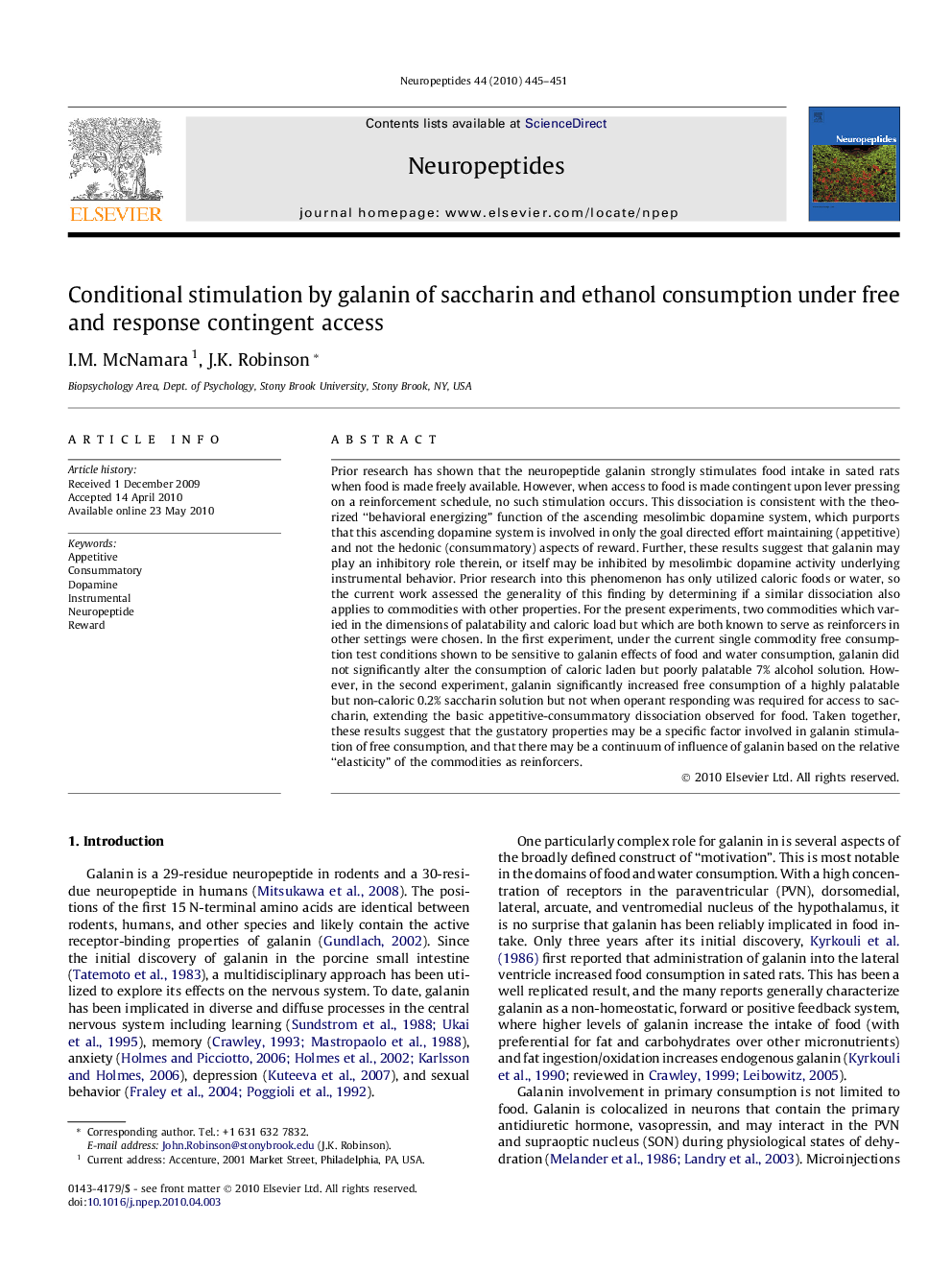| Article ID | Journal | Published Year | Pages | File Type |
|---|---|---|---|---|
| 2808213 | Neuropeptides | 2010 | 7 Pages |
Prior research has shown that the neuropeptide galanin strongly stimulates food intake in sated rats when food is made freely available. However, when access to food is made contingent upon lever pressing on a reinforcement schedule, no such stimulation occurs. This dissociation is consistent with the theorized “behavioral energizing” function of the ascending mesolimbic dopamine system, which purports that this ascending dopamine system is involved in only the goal directed effort maintaining (appetitive) and not the hedonic (consummatory) aspects of reward. Further, these results suggest that galanin may play an inhibitory role therein, or itself may be inhibited by mesolimbic dopamine activity underlying instrumental behavior. Prior research into this phenomenon has only utilized caloric foods or water, so the current work assessed the generality of this finding by determining if a similar dissociation also applies to commodities with other properties. For the present experiments, two commodities which varied in the dimensions of palatability and caloric load but which are both known to serve as reinforcers in other settings were chosen. In the first experiment, under the current single commodity free consumption test conditions shown to be sensitive to galanin effects of food and water consumption, galanin did not significantly alter the consumption of caloric laden but poorly palatable 7% alcohol solution. However, in the second experiment, galanin significantly increased free consumption of a highly palatable but non-caloric 0.2% saccharin solution but not when operant responding was required for access to saccharin, extending the basic appetitive-consummatory dissociation observed for food. Taken together, these results suggest that the gustatory properties may be a specific factor involved in galanin stimulation of free consumption, and that there may be a continuum of influence of galanin based on the relative “elasticity” of the commodities as reinforcers.
